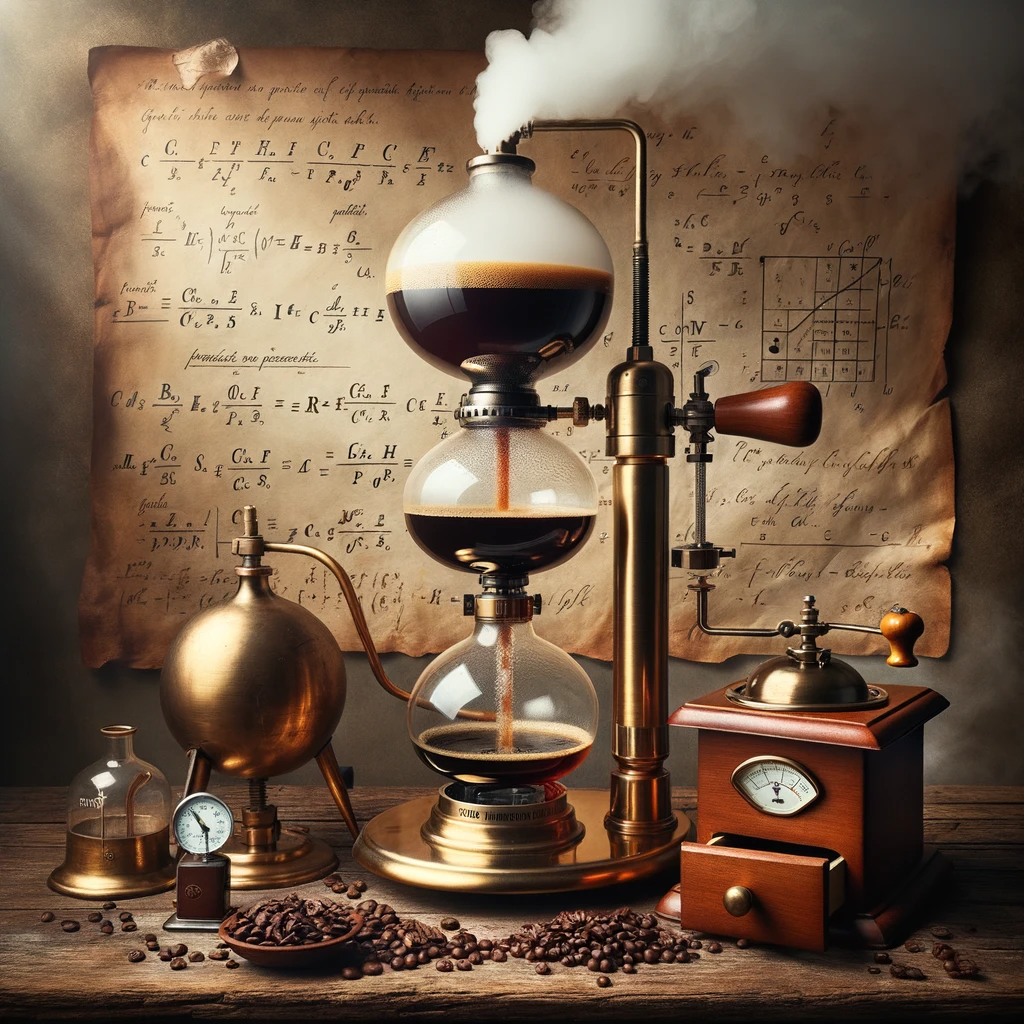Introduction
Ah, the siphon coffee maker—a marvel of physics and a centerpiece of coffee artistry. If you've ever wondered how this intricate device works, you're in for a treat. Today, we'll delve into the science behind siphon coffee brewing, exploring the principles that make it so unique and the history that shaped its development.
Siphon-science for Dummies
The siphon coffee maker operates on two simple principles: vapor pressure and gravity. Imagine you're heating water in the bottom chamber of the siphon. As the water gets hot, it wants to move and expand. This "urge" is what we call vapor pressure. When this pressure gets strong enough, it pushes the water up a tube into the top chamber, where your coffee grounds are waiting.
Once the coffee is brewed, you remove the heat. The vapor pressure drops, and gravity pulls your brewed coffee back down into the bottom chamber. Voila! You have a delicious cup of siphon-brewed coffee.
Siphon-science for Geeks
For those who crave a deeper understanding, let's delve into the nitty-gritty details of the physics behind siphon coffee brewing. Much of this section is inspired by the comprehensive work of Brian Harris, which you can explore further here.
The process begins with the heating of water in the lower chamber, increasing its vapor pressure. At the boiling point of 100°C, the vapor pressure equals the standard atmospheric pressure of 760 Torr (760 mm of mercury). This pressure difference is maintained during brewing through the continuous heating of the lower chamber.
As the water in the lower chamber becomes hot enough, its vapor pressure exceeds the pressure of a standard atmosphere. The mixture of air and water vapor in the lower chamber expands rapidly. When this new pressure surpasses atmospheric pressure, it pushes the remaining water up the siphon tube into the upper chamber. The water stays in the upper chamber as long as the pressure difference between the upper and lower chambers is sufficient to support it—about 1.5 kPa or 0.015 atm.
Once the coffee has finished brewing (usually around 1 minute and 10 seconds), the heat is removed, causing the pressure in the bottom vessel to drop. The force of gravity then overcomes the pressure difference between the chambers, allowing the brewed coffee to drop back into the bottom chamber.
It's worth noting that siphons work by pushing the water under pressure, not under tension. The changing vapor pressure in the lower vessel, combined with the constant atmospheric pressure in the upper vessel, drives the siphon. When the water cools, the pressure in the lower vessel drops as steam condenses into dense water, taking up less volume and hence dropping the pressure.
Conclusion
The siphon coffee maker is a blend of art and science, offering a brewing experience that is both visually engaging and scientifically fascinating. Its principles of vapor pressure and gravity, combined with its rich history, make it a unique method for coffee brewing. So the next time you sip a cup of siphon-brewed coffee, you'll appreciate not just its flavor but also the science and history that make it possible.
Cheers to your next brew! 🍵

